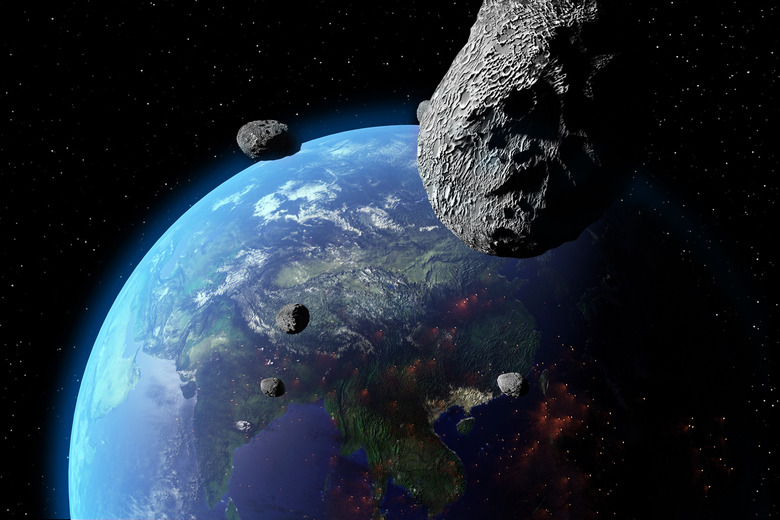A Massive Asteroid Will 'Just Miss' Earth In 2029, Astronomers Say
When scientists first discovered the asteroid 99942 Apophis in 2004, they also discovered it held a three percent chance of colliding with Earth in 2029. At nearly 1,100 feet wide (340 meters), it would have caused quite a catastrophe if it hit our planet. However, scientists have ruled out that possibility, saying it will "just miss" our planet when it passes in 2029.
But, the possibility of such a close fly-by by the asteroid Apophis is exceptionally exciting. The asteroid is expected to come within 20,000 miles of our planet's surface – roughly one-tenth of the distance from Earth to the Moon. That means it will come close to the orbit that many satellites follow.
Of course, hearing that the asteroid Apophis is passing closely and then hearing that the "closeness" is 20,000 miles might seem a bit overly dramatic. However, close is a very relative term when it comes to space. While 20,000 miles might not seem close to our planet, that's technically considered Earth's cosmic backyard, and that's why so many scientists were so worried about even a three percent chance of collision.
Further, because the asteroid Apophis is set to pass so closely to Earth, it's going to give us a good chance to study firsthand one of these planet-killer asteroids that astronomers are so worried about. These kinds of asteroids are exactly why NASA has been working on asteroid defense programs like D.A.R.T., which it tested last year.
For a bit of comparison, scientists consider any asteroids that come within 4.6 million miles of Earth that are at least 460 feet (140 meters) in diameter a threat to our planet. So, at 340 meters wide, the asteroid Apophis could cause a significant amount of damage if it did impact our planet. Luckily, that isn't something we have to worry about, though.
But, if you love space, you can set yourself up to check out the asteroid when it passes too close to our planet. Depending on your location and the weather when it passes, you may be able to see the glow of the asteroid Apophis from your backyard, without even needing a telescope.
It's very rare that asteroids of this magnitude come so close to Earth. Just recently, another spectacular celestial rock known widely as the green comet made a close flyby of our planet, and it isn't expected to return for at least another 50,000 years.
